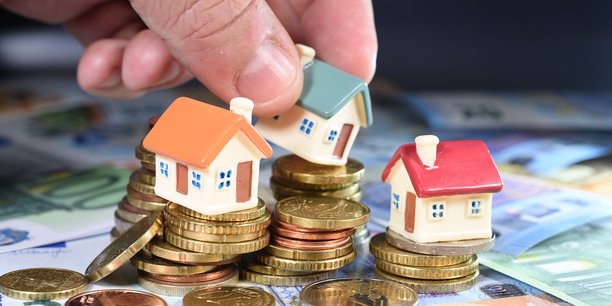In the middle of the year 2021, the FNAIM du Rhône (National Federation of Real Estate) is now in a position to draw an initial assessment of the first consequences of the health crisis. Has the pandemic affected the behavior of buyers in the real estate industry?
Last December, the president of the Rhone branch, Nicolas Bouscasse, already declared, observing his sector: “The crisis did not take place “.
And Anne de Planchard, vice-president of the FNAIM du Rhône, delegated to the transaction, to now complete: “At the end of the first confinement, we experienced a record number of visits, which was able to maintain sales“.
Thus, in the Rhône, “the cumulative 12-month home sales at the end of March 2021 amounted to 25,303, an increase of + 5% compared to 2020 “, announces the FNAIM. By way of comparison, before the crisis, 26,640 housing transactions had been carried out in 2019, against 25,444 in 2018. Figures which generally follow the national trend, and which demonstrate a form of market stability.
The turnover rate in 2021 – the number of home sales compared to the stock – remains at 2.8%, “either at a level always about the same“, indicates Anne de Planchard.
Lyon, Saint-Étienne, Grenoble or Vichy in the lead
And according to the real estate valuation engine Drimki, the Auvergne Rhône-Alpes market has also drained 8.27% of the total number of transactions over the whole of the past year (against 10.66% in 2019). Figures that represent 49,422 apartments sold and 37,846 houses.
According to Drimki, the list of cities that record the most transactions is made up of metropolitan areas such as Lyon, Saint-Étienne, Grenoble but also Vichy in fourth place. And according to FNAIM, the Rhône represents 18.8% of the region’s transaction market, followed by Isère (15.1%) and Haute-Savoie (11.8%).
Even if Lyon is still attractive, confinements have had their effect on mentalities. On the map of regional capitals, only Lyon (-2.7%), Paris (-10%) and Strasbourg (-13.4%) experienced a drop in sales volumes over one year. All the other regional capitals have instead gained in attractiveness.
A phenomenon that can be explained by the change in the standards of post-pandemic households, in terms of criteria for choosing their future accommodation. “There was a craze to leave the city and move towards suburban areas with gardens“, announces Anne de Planchard.
Prices that continue to rise
Still, mdespite the confinements, “however, there was no price collapse in Lyon because it is a dynamic metropolis. Consequently, although volumes have fallen in Lyon, prices have continued to increase” , emphasizes Nicolas Bouscasse.
In June 2021, in the Rhône, the average prices were thus € 4,111 m² for an apartment and € 3,216 / m² for a house.
While in Lyon, it takes an average of 4.456 € / m², an increase of + 3.9% compared to last year. An average figure that does not reflect the reality of all the boroughs. In the 6th district, this average price climbs to 6,160 € / m². In the 5th, it is 3,750 € / m². All the same, enough to consolidate Lyon in its 3rd position among the most expensive cities in France.
Rents that also continue to increase despite everything
On the rent side, the increase is also running its course. The median rent in June 2021, in Lyon, is € 13.69 / m². In December, the FNAIM announced that compared to 2018, rents increased by + 10% in Lyon and by + 20% in the metropolis of Lyon.
And this, while the rent control measures within the metropolis have been announced to come into force in the second half of 2021, for a period of 5 years.
SOn rentals, another element could influence the market, with the entry into force on July 1, 2021 of the new Energy performance diagnostic and environmental, which classifies the dwellings from A to G:
“The lessors of an apartment located in a tight zone and classified F or G are no longer authorized, since 1is January 2021, to increase the rent. Thermal strainers will be banned for rental from 2025 for Gs, and 2028 for Fs, under the Resilience and Climate Act, under discussion. Dwellings classified E and D could suffer the same fate in 2034 or 2038, for E, 2045 or 2048 for D, when the National Assembly and the Senate will have agreed on the dates “, was already exhibiting Le Monde.
“This DPE eliminates part of the rental stock, so I call for growth. There is no ecology without growth“, insists for his part the president of the FNAIM Rhône. A wish already expressed during the presentation of the figures for December, where the president of Fnaim had said to have precise to the elected officials of Bruno Bernard (EELV) who should have “produce housing“.
As a reminder, the current stock (excluding nine) in the Rhône is made up of 915,000 housing units, divided between main residences (89%), secondary housing (3%) and vacant housing (8%). 70% of homes are apartments. Of the 818,000 Rhone households, 48% are owners and 50% are tenants (of which 32% are private sector tenants and 18% from the social sector).

